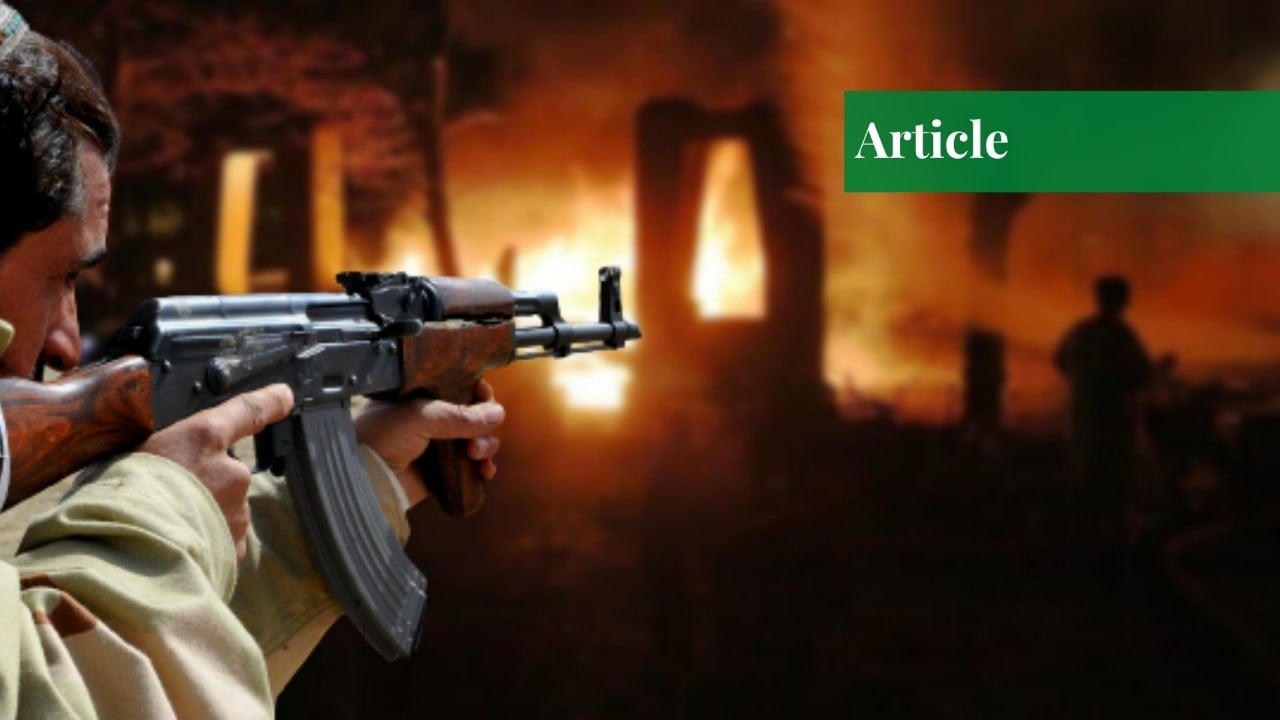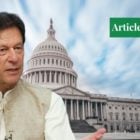A Dead End?
From 2001 up till 2018, Pakistan suffered over 65,000 fatalities, the overwhelming majority of them civilians caught in the crossfire of fights between militants and the Pakistani and American militaries. 2009 is the year considered the bloodiest of all the security issues for Pakistan. According to the Islamabad-based Centre for Research and Security Studies, the year 2009 saw over 2,300 civilians, 1,000 security personnel, and over 8,000 insurgent fatalities; a tally of 11,585 deaths in just a single year.
This was nearly double the deaths just a year earlier, 2008 saw over 6,700 people killed in terrorism-related violence and counterinsurgency. Whilst military operations fluctuated throughout the first decade of the 2000s, it was not until the end of 2014 that public opinion and fervor swung in favor of the fight against terrorism.
It is only regrettable that the reason for this was so costly, a wound in our country’s history that we can never forget. Whilst educational institutes had long been a target for militant attacks, none could have imagined the events of 16th December 2014 would ever come to pass.
On that day, a number of gunmen associated with the Tehreek-i-Taliban Pakistan (TTP) infiltrated the Army Public School, Peshawar, and indiscriminately opened fire on children and their teachers in the school. 149 people were killed. The Pakistani military’s Zarb-e-Azb operation had begun earlier that year in June but received a new impetus with the heinous attack of 16th December.
Within months, the army was reporting successes in driving militants associated with the TTP and numerous other Islamist militant outfits out of the North Waziristan Agency in the Federally Administered Tribal Areas; one of the last redoubts left to terrorists following other military operations. In the following years, terrorist attacks in Pakistan dropped sharply, as the perpetrators were either killed or driven out into neighbouring Afghanistan.
A semblance of normalcy was achieved, and many believed that Pakistan was on the path to peace again. The return of the Afghan Taliban to power in Afghanistan in August 2021 led many to also hope that they would rein in the TTP fighters still carrying out attacks across the border in Afghanistan, in return for all the diplomatic support Pakistan provided them during the peace process and negotiations with the United States in recent years. A UN estimate puts the number of TTP fighters based in Afghanistan at roughly 10,000.
However, such hopes have been dashed. Far from seeing a drop in attacks, the situation has worsened since last August. Since January this year, over 100 Pakistani soldiers have been killed in cross-border attacks, usually carried out by the TTP. On April 16, Pakistani airstrikes in retaliation for these attacks struck Afghanistan, but allegedly killed over 40 civilians, an action which has received much condemnation on both sides of the border.
According to the TTP, they carried out 282 attacks in 2021 alone, killing an alleged 972 people. The violence is not limited to the border areas but has begun creeping into cities as well. On 4 March, the Kucha Risaldar Shia Mosque in Peshawar was the site of a suicide bombing that killed over 60 people and wounded nearly 200, one of the worst terrorist attacks in recent memory.
Four days later, an Improvised Explosive Device (IED) was set off in Sibi, Balochistan, resulting in over a dozen casualties. On 26 April, a suicide bombing outside Karachi University in the capital city of Sindh killed one Pakistani and the three Chinese nationals he was driving, instructors at the university. The motives behind these attacks are differentiated, they have been carried out by different groups, and are not localised in any one region. These indicate a disconcerting trend; that Pakistan might be once again sliding into chaos.
Who are the New belligerents?
Let us first discuss the perpetrators of these attacks. The TTP came into existence in 2007, in response to the military siege of the Lal Masjid in Islamabad, and to what was seen as a foreign war against Islam, rather than on “Terror”. Calling for the imposition of a complete Islamic system in Pakistan, the TTP has carried out numerous terrorist attacks across Pakistan over the past decade and a half.
The TTP was severely weakened by Pakistani military operations such as Zarb-e-Azb but began regrouping and re-strengthening itself by 2018, under its new leader Noor Wali Mehsud. In 2021, they carried out a bombing at the Serena Hotel in Quetta, their first attack in a major city in years. Many see the TTP and the Afghan Taliban as two sides of the same coin; with long links of fraternity and cooperation.
The TTP often provided soldiers for the Afghan Taliban, who in turn sheltered TTP militants fleeing Pakistani military operations. As mentioned above, the number of TTP insurgents currently sheltering in Afghanistan is estimated at around 10,000. There is thus much question about whether the Afghan Taliban are complicit in the attacks being carried out by their Pakistani ‘counterparts’ in Pakistan.
However, this is unlikely. Firstly, the Afghan Taliban have much to thank Pakistan for. Throughout the Afghan War, Pakistan has stressed the importance of including the Taliban in negotiations and talks, advice which the United States has often ignored, especially in the starting years. The Bonn Conference of 2001 which declared Hamid Karzai as the interim President of Afghanistan had Afghans from numerous ethnicities, regions, and political affiliations, but none from the Taliban.
Pakistan has its reasons to do so. The influx of large numbers of refugees from Afghanistan in the 1980’s due to the Soviet-Afghan war is often seen as the beginnings of terror activities in Pakistan, as militants were able to traverse the border with ease amidst the millions of refugees. Pakistan supported a Taliban-inclusive peace process in Afghanistan to prevent another such influx, in a situation where the Taliban would continue engaging in an all-out war with America and its allies in Afghanistan.
Secondly, the Taliban government in Afghanistan is barely able to function. Having had its assets frozen in the wake of the Taliban take-over, Afghanistan finds itself cut off from billions of dollars that until recently it could call its own. Amidst the world’s reluctance to recognise or formally deal with the Taliban government, over 20 million innocent Afghan citizens are in dire need of humanitarian aid, with the largest food insecure population in the world today.
Due to their severe economic frailty, the Afghan Taliban are both dependent on foreign countries (like Pakistan) to receive aid, and also incapable of materially supporting and maintaining a conflict. As such, it is unlikely that the Afghan Taliban are involved in TTP attacks against Pakistan, but it is also unlikely that they will try and stop the TTP. Though in November 2021 they brokered peace talks between Pakistan and the TTP, they are reluctant to apply force on the TTP to stop its attacks.
This is due to the long ties of cooperation they share with the TTP, but also out of fear of pushing the TTP to join one of their many rivals in Afghanistan. This brings us to the major newcomer in terrorism in South Asia. The Islamic State Khorasan (ISIS-K) was founded in Afghanistan and Pakistan in 2015 when defectors from local militant groups like the TTP, the Taliban, and al-Qaeda allied with the Islamic State of Iraq and the Levant (ISIS/ISIL).
Since 2015, ISIS-K has carried out war with the Afghan Taliban, even as the American war in Afghanistan carried on. The Pakistani Taliban (ISIS’s Pakistani branch) have also stepped up attacks inside Pakistani territory, with the most devastating attack to date being the aforementioned March 4th bombing of a Shia mosque in Peshawar, killing 64 people and wounding over a hundred.
ISIS-K has also been involved in attacks in Balochistan, a province already reeling from years of sectarian and separatist violence. In January 2021, ISIS kidnapped and killed 11 coal miners in Balochistan. The miners were Hazaras, a Shiite minority who face the worst persecution in both Pakistan and Afghanistan. Many also see the emergence of a new terrorist “nexus” in Pakistan, especially in Balochistan.
The 2021 bombing of the Serena Hotel in Quetta by the TTP was targeting the Chinese ambassador to Pakistan, but failed to kill him. Such attacks against foreign nationals, especially Chinese workers, in Balochistan are usually carried out by the Baloch Liberation Army, a separatist insurgency involved in a decades-long war with Pakistani security forces.
With recent terror attacks in Balochistan being carried out by the BLA, the TTP, and ISIS-K, theorists are suggesting that alliances have been formed between these groups, most likely the BLA and the TTP, to further their fight against the Pakistani state.
Is it all Terrorists?
Sadly, terrorist groups cannot claim a monopoly on religiously and secularly motivated violence in Pakistan. Pakistan has a long and sad history of violence perpetrated by individuals and mobs, in order to ‘avenge’ some perceived insult of religion or sect. The December 2021 lynching of Sri Lankan national Priyantha Kumara, a factory manager in Sialkot, over his alleged desecration of religious posters, is a prime example of such violence.
Dozens of bystanders became involved in the mob, not in an attempt to rescue the victim but to partake in the violence. Just two months later, a man named Mushtaq Ahmad, supposedly mentally unstable, was lynched in a Pakistani village for burning the Quran, even as policemen attempted to escort him from the scene. The impunity with which mobs operate in Pakistan is lamentable.
Though 6 men have been sentenced to death in the Priyantha Kumara lynching case, dozens more have gone unpunished and it remains to be seen whether the death sentence will be commuted. The beginnings of this particular paradigm in Pakistani society and internal affairs can be traced back to the killing of Salman Taseer, the famous politician who opposed the blasphemy law in Pakistan.
His assassination in 2011 amid the controversial Asia Bibi case triggered numerous political shifts, most notably the formation of the Tehreek-e-Labbaik Pakistan (TLP) in 2015. The TLP has often pressurized the government to take action against the blatant blasphemy that is becoming prevalent in the West – especially in Europe.
The Pakistani state has repeatedly engaged in negotiations with the TLP, making itself seem weak to the supporters of the party. This comes with a price, as the proxy terrorist groups funded by anti-state parties also view the government as ‘weak’ and increase their terrorist activities.
What does this mean for Pakistan?
Since 2018, the incidence of terrorist attacks has been on the rise. Most notably, the TTP has been the organisation leading attacks against Pakistani security forces and targets, killing hundreds of people, civilians, and soldiers in the past few years. Having lived through the dark days of the 2000s, the question on most people’s minds is; will we see Pakistan go through all that again?
Last year, Pakistan tried the same route it did in the 2000s; negotiation with the TTP. Back then, Imran Khan often took advantage of not leading either the government or the opposition to present a controversial opinion; that the TTP should be negotiated. This was seen as an attitude sympathetic to the insurgents, earning him the nickname “Taliban Khan.”
Negotiations, though tried many times, always failed. The TTP’s single-minded obsession with settling for nothing less but the entire state of Pakistan has meant that nothing the Pakistani state can offer in return would satisfy them. In office, Imran Khan again tried negotiating with the TTP just last year, negotiations that have obviously failed, their only achievement being that the TTP was given respite to regroup and consolidate its power.
Ceasefires, when agreed upon, have always been broken. Taliban commanders and fighters have returned to the very places they were pushed out of in 2014, living as openly and freely as they once did. For the first time, from 2007 to 2014, Pakistan had to resort to open military campaigns when negotiations failed. This time, as negotiations continue to fail and the TTP continues its brazen attacks on military personnel and civilian targets, is a military solution the only option left?
The costs would be extremely high. Estimates for the Zarb-e-Azb operation put the cost at around $1.9 billion, an amount that cash-strapped Pakistan would be hard-pressed to afford, especially with the IMF pushing Pakistan to cut government spending. Millions more would be required for the hundreds of thousands, perhaps even millions, who would be displaced by fighting between the military and militants.
Over 4 million people were classified as Internally Displaced Persons (IDPs) in the early years of the counter-insurgency. Damage to infrastructure, housing, transport networks, agriculture and livestock, and public service systems would also be tremendous. Furthermore, the TTP may follow the same strategy they followed last time, of simply escaping to Afghanistan.
This time round, they may even find more sympathetic hosts in the Afghan Taliban than the American-sponsored government of President Ashraf Ghani in the first cycle. In such a state of events, Pakistan may be unable to score significant military gains against the terrorists, or risk confrontation with the Afghan Taliban, with whom tensions have already begun to run high over the same issues. Then again, Pakistan may find international support for a war that it would wage.
Even if the rumours surrounding the US-led regime change in Pakistan are false, there is no denying that the new Pakistani government under Prime Minister Shahbaz Sharif is one much friendlier to Western powers than the ousted one under Imran Khan. The United States might be willing to fund and support Pakistani military action against the TTP, perhaps in a bid to exact revenge on the Taliban, who won a de facto victory in Afghanistan with the withdrawal of the US and its allies last year.
Military action might not even be in the form of an all-out war, but instead of more targeted campaigns of assassinations or abductions of major militant leaders. However, it is not just the TTP that Pakistan is fighting. Waging military action against one group may not be the best course of action when one considers what others might do. For example, the ISIS-K is seen by many locals as a much more ruthless and dangerous organisation, even if they lack the numerical superiority of the TTP.
Fighting just one group might have serious consequences. Firstly, different terrorist groups could form alliances, as discussed above. In the face of a centralised counter-insurgency, groups like the TTP and ISIS-K may be forced into pooling their resources and fighters, increasing their capability to resist and thereby the dangers to Pakistani military forces and civilians.
A second possibility could be that severely weakening one group through military action could lead to a power vacuum in the areas previously their strongholds. This could kick-start a bloody power struggle between rival groups or even factions within groups that would cause untold losses to civilian life and infrastructure. Kabul in the early 1990s before the rise of the Afghan Taliban and after the fall of the PDPA government is a perfect example of such a scenario, though an exact recreation is unlikely in the Pakistani context.
Another possibility could be that one group could take advantage of the state’s pre-occupation with another to reinforce itself, carrying out attacks in other parts of the country while military forces are distracted with the ongoing campaign. If military forces move into areas controlled by the TTP in the northwest of Pakistan, ISIS-K and/or the BLA may ramp up attacks in Balochistan, for example.
In short, Pakistan faces tough decisions in its immediate future, with extremely delicate calculations amid volatile situations. Negotiations have failed with all these terrorist groups and their affiliates in the past, both inside and outside Pakistan, and while military action would lead to further deaths and tremendous financial and social costs, it might be the only resort left to the Pakistani state. Doing nothing right now simply means waiting for the country to get even more destabilized than it is now.
If you want to submit your articles, research papers, and book reviews, please check the Submissions page.
The views and opinions expressed in this article/paper are the author’s own and do not necessarily reflect the editorial position of Paradigm Shift.



















